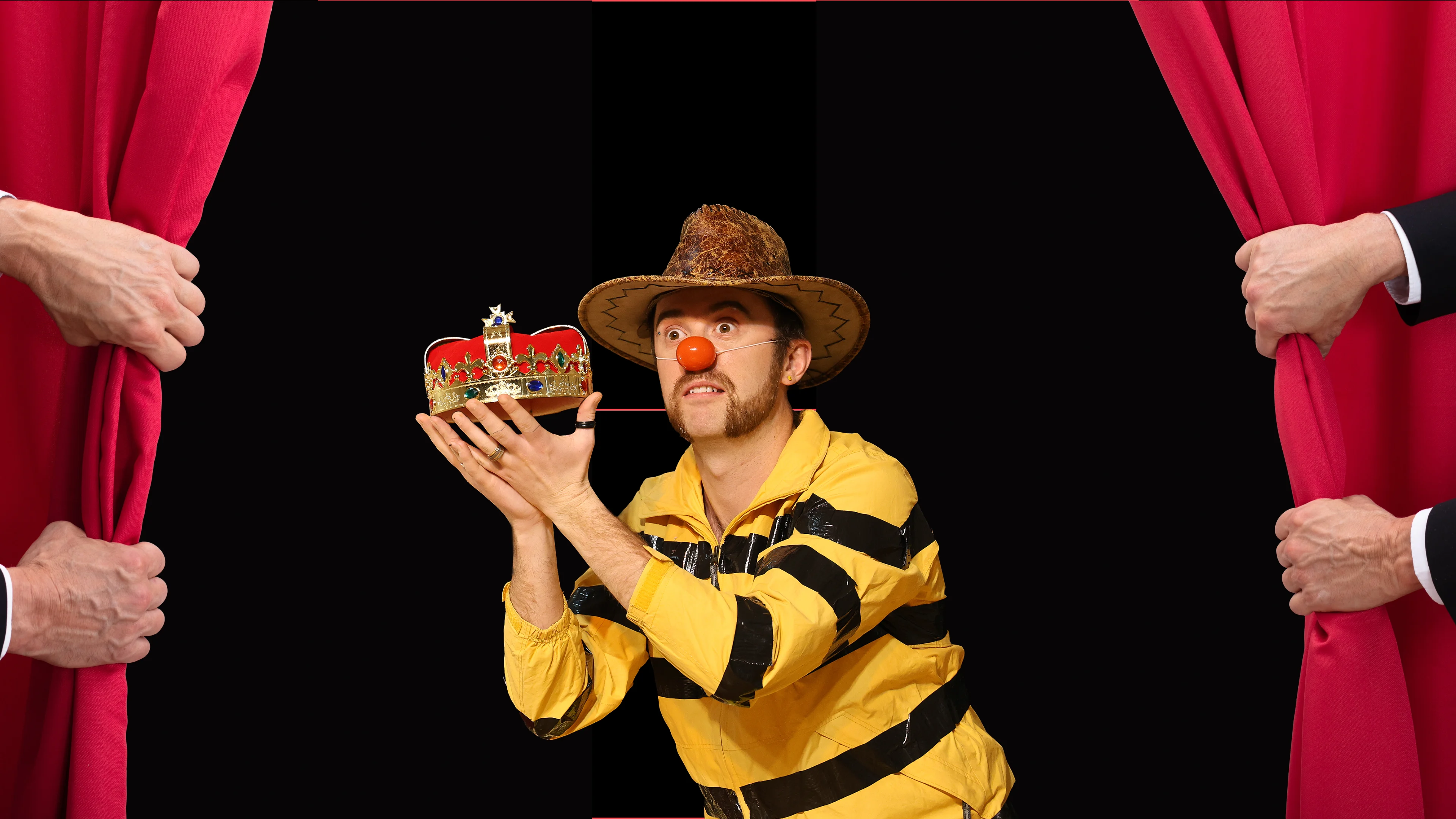
Taster Class In Clown Comedy
Theatre Deli, London
Learn More

Performer → Clown → Character
Clown work happens in layers. Whether in training or on stage, you’re not just playing a character, and you’re not just being yourself. You’re playing through layers of awareness and performance.
This model breaks clown performance into three key layers:
This is you - the real person standing on stage. You’re not pretending. You’re not playing. You’re present in the room, feeling things, making decisions. The audience might not see this part of you directly during the show, but it’s always there under the surface.
Sometimes the performer peeks through - when you trip for real, or when you're genuinely overwhelmed, or during post-show thank-yous. The performer is the one who goes home at the end of the night.
You, the performer, are playing the clown. This is a version of you, but heightened, cheekier, more naive, more reactive. Your clown is like your inner child let loose on a stage: proud to be there, hungry for laughs, and always aware of the audience.
The clown knows they’re in a show. They break the fourth wall. They make eye contact. They grin when something funny happens. They’re the part of you that goes, “Oops. That went wrong. Let’s show them.”
Most of the time during a show each performer would only play 1 clown.
Sometimes the clown puts on a mask (literal or metaphorical) and plays a role - a business person, a chef, a superhero. The clown tries to properly play the character. They commit. They get it “right.” But something always goes wrong. Because the clown is still there underneath, watching it all happen.
The audience sees both: the character being played, and the clown breaking that character when the game breaks or the flop hits. That’s where a lot of the joy lives.
A clown may play many characters during a show, making the difference clear through costumes or acting.
Understanding these layers helps us get clearer about who is doing what on stage - and what kind of response is needed.
When we say “show us how you feel” in a clown class, we’re usually saying: drop the character → reveal the clown.
When an unplanned flop happens, that’s a moment where the performer tried something they thought would work, but it didn’t. The clown can still respond playfully - but the source of the failure was higher up.
A planned flop is when the clown deliberately plays a moment that goes wrong, for laughs.
A character might fail - but if the clown doesn’t respond to it, we’re left watching just the story, not the play.
Ask: Who is feeling this right now - the character, the clown, or the performer?
Invite students to break character to reveal the clown - especially in moments of flop or failure.
Help performers notice the difference between “I thought this would work” (performer) vs “my clown thought this would work” (planned play).
Understanding these layers helps highlight what makes clown unique - but also how it compares to other comedy styles:
Most stand-ups perform as themselves (or a lightly exaggerated version). The performer and the stage persona are close enough that we often treat them as one. There’s usually no clown and no character layer - just direct communication from performer to audience.
Some stand-ups blur the lines by performing in full character. In that case, you’re watching the performer playing a character—but without the clown’s playful self-awareness or tendency to break the fourth wall.
In improv, we often see the performer when they take suggestions or set up a game. Then they’ll jump into a character, usually just for a scene or two. Depending on the format, they might be playing as themselves in a game-based show, or rapidly switching characters in narrative scenes. The clown layer is usually absent, unless it’s clown-informed improv.
Here, the performer fully steps into a single character. They stay in it for the whole bit, often never dropping the mask. The performer is visible underneath if you’re looking for them—but the character dominates. There’s rarely a wink to the audience. It's committed and contained.
Like character comedy, sketch is built on the performer playing characters. The difference is volume: in sketch, you’ll usually see the performer jump between multiple characters in different sketches. The clown layer might appear in some sketch styles, but it’s not a given.
These layers—Performer, Clown, and Character—are a useful way of looking at how clown functions. But comedy isn’t rigid. The lines often blur.
You might see a stand-up accidentally reveal their clown mid-rant. Or an improviser who, without knowing any clown theory, drops their character in a moment of flop and grins at the audience—that’s the clown peeking through.
Even performers who’ve never trained in clown often instinctively reveal their clown when things go wrong. It’s not the same as the performer breaking character. It’s that deeper part of themselves—playful, aware, and emotionally available—that shows up in the cracks.
You can find clown within other styles. You can bring clown energy into stand-up, sketch, or improv. And many great performers move between layers without naming them.
This model doesn’t box you in. It just gives you a clearer map of what’s happening underneath the laughter.
